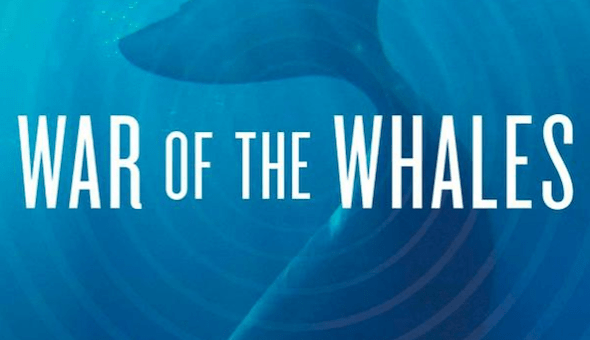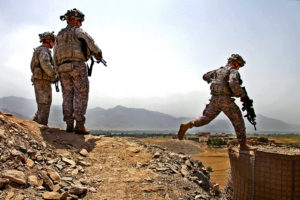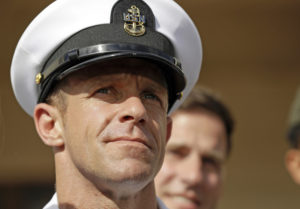War of the Whales
Harmful, unintended consequences of technological advances, such as the deadly mass strandings of whales caused by naval sonar, need to be confronted, not denied.
|
To see long excerpts from “War of the Whales” at Google Books, click here. |
“War of the Whales: A True Story” A book by Joshua Horwitz
Sometimes debates come up that clarify the values and conflicts of our society. They needn’t involve the grand questions of the day — which most often are endlessly partisan and complex — but they nonetheless can offer unmistakable insights into who we really are. One example: the naval use of increasingly powerful sonar and the effect of those blasts of sound on marine mammals, especially whales.
As “War of the Whales,” by Joshua Horwitz, makes convincingly clear, the connection between naval sonar and deadly mass strandings of whales is scientifically undeniable. Whales of all kinds — but especially the remarkable and deep-diving beaked whales — regularly wash up dead or dying following naval sonar use around the world. The American Navy and others argue that these practice sessions with sonar provide essential training for sailors in charge of protecting their ships from submarine attack — a high priority now that scores of nations operate submarine fleets. That some whales might die as a result seems an acceptable price. After all, more whales are probably killed by boat strikes or the omnipresent noise of commercial ships and underwater oil-and-gas exploration.
But as the “War of the Whales” lays out in a strong and valuable narrative, the stakes are quite high. The question, after all, made its way from the shores of the Bahamas, Greece, England and Madeira to the U.S. Supreme Court.
The story starts on the island of Abaco in the Bahamas, home to a former naval acoustics specialist turned freelance whale researcher, Ken Balcomb. For 10 years he and his then-wife, Diane Claridge, had documented the presence and habits of the whales (especially the beaked whales) that lived in the deep canyon nearby. Then one evening in 2000, a Cuvier’s beaked whale washed up onshore 100 feet from Balcomb’s house, which happened to be filled with volunteers helping with a census. Soon Balcomb was flying around the area to see if other whales had been harmed; he and his colleagues found and videotaped 17 whales of several species washed up on nearby islands in the largest mass stranding in recent memory. Balcomb also saw a Navy destroyer, and his initial suspicions that the whales had been blasted with sonar grew stronger.
Thanks to a public outcry after news of the strandings went viral, and to research and lawsuits by the Natural Resources Defense Council, it was revealed that Navy war games with sonar had been underway as the whales washed up. It turned out that after losing their ability to conduct war games off the Puerto Rican island of Vieques, the fleet commanders had selected the Grand Canyon of the Bahamas as an alternative. Had this been public knowledge ahead of time, Balcomb would certainly have raised hell about the likely lethal effects of the sonar on the whales he had been studying for a decade.
At a New York City news conference joined by the initially reluctant Balcomb, he summed up his involvement in the strandings as “the most unusual event of my life.” Horwitz describes what happened as Balcomb ran a videotape: “He watched along with the audience as [a] beaked whale repeatedly circled back toward shore. … ‘This whale was not hit by a ship or a propeller,’ he began. ‘He was hit by a pressure wave of sound.’ ”
As Horwitz explains, the Bahamas stranding drama helped open up a much larger world of secret sonar use and planning for ever-grander systems. It also refocused attention on the continuing plight of whales almost three decades after commercial fishing of the animals was banned internationally and four decades after the U.S. Marine Mammals Protection Act mandated presumably strict safeguards.
Perhaps even more important, the stranding became an opportunity for researchers and activists to bring the public up to date on whale research — how some orcas and dolphins (a kind of whale) have brains larger than humans and clearly know how to use them, how some beaked whales can dive far deeper than a submarine can descend, how sophisticated communication within whale pods is the norm.“War of the Whales” is particularly good at highlighting the role of individuals, working against very long odds, in bringing about change. Balcomb is a compelling figure: a reluctant whistle-blower whose love for whales is palpable. Joel Reynolds of the Natural Resources Defense Council did the heavy litigating, and either won most of his cases or reached significant settlements (though the conservative majority of the Supreme Court ultimately limited or rejected some of those victories). Navy and federal regulatory officials often do not come off well, but there are exceptions, and Horwitz presents the military’s positions in full.
The stories and words of the key players propel the story along, though sometimes at the cost of some credibility. Quite a few quotes and exchanges in the book make readers feel they are right there — even if the writer clearly was not. A fuller explanation of this kind of re-created dialogue and its pitfalls would have reassured this reader.
By the end of the tale, the Navy has changed its ways somewhat and become far more transparent. It applies for sonar-training use permits rather than doing what it wants in secret. But in his epilogue, Horwitz writes that in 2012, the Navy applied to build a low-frequency sonar system that sends out loud sounds able to detect submarines around the world. The new system would inevitably harm some (perhaps many) marine mammals, too, and another lawsuit was filed. In other words, much had changed, but even more had not.
This is why the book is so clarifying. Nobody — perhaps especially not Navy men and women — wants to harm intelligent, grand, long-hunted and sometimes near-extinct whales. But a system is in place that pushes us all in that direction anyway. Stand-up citizens such as Balcomb and talented litigators such as Reynolds can do the very hard work of bringing a situation like this to public attention. They can even bring about some useful changes. Their message is that modern sonar kills whales as collateral damage during training exercises as surely as commercial fishermen once killed them for oil with mechanized harpoons — a practice widely seen now as barbaric.
Harmful, unintended consequences, which accompany so many technological advances, need to be discussed and debated, not denied or wished away. By telling the sonar-and-the-whales story in such detail and breadth, the author may provoke a more substantial debate about what human advances and priorities are doing to the rest of the planet.
Marc Kaufman reported on the whale strandings for The Washington Post. His new book, “Mars Up Close: Inside the Curiosity Mission,” will be published in August.
©2014, Washington Post Book World Service/Washington Post Writers Group©
Your support matters…Independent journalism is under threat and overshadowed by heavily funded mainstream media.
You can help level the playing field. Become a member.
Your tax-deductible contribution keeps us digging beneath the headlines to give you thought-provoking, investigative reporting and analysis that unearths what's really happening- without compromise.
Give today to support our courageous, independent journalists.





You need to be a supporter to comment.
There are currently no responses to this article.
Be the first to respond.